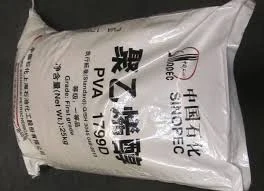The Importance of Cellulose in Material Science
Cellulose, a complex carbohydrate, is one of the most abundant organic polymers found in nature. It is primarily derived from the cell walls of plants, and its unique properties have made it indispensable in various applications, especially in material science. Understanding cellulose and its potential can lead us toward more sustainable and innovative materials.
At its core, cellulose is a linear chain of glucose molecules linked by β(1→4) glycosidic bonds. This structure not only provides strength and rigidity to plants but also endows cellulose with excellent mechanical properties that can be harnessed in various material applications. The fibrous nature of cellulose makes it easy to process into different forms, such as fibers, films, and gels, thus broadening its potential uses in multiple industries, including textiles, packaging, and construction.
The Importance of Cellulose in Material Science
In textiles, cellulose fibers, such as cotton, rayon, and lyocell, are widely used. These fibers possess exceptional breathability, moisture-wicking capabilities, and comfort, making them highly desirable in clothing production. The versatility of cellulose allows for easy dyeing and finishing processes, offering a range of aesthetic possibilities. Furthermore, innovations in cellulose processing have led to the development of high-performance fibers, such as Lyocell, which is made from sustainably sourced wood pulp and is produced in a closed-loop system, significantly reducing environmental impact.
cellulose material

The use of cellulose in the packaging industry has also gained momentum as companies seek sustainable materials. Cellulose-based films are an excellent alternative to conventional plastic films, offering comparable barrier properties against moisture and gases while being compostable. This transition to biodegradable alternatives not only aligns with global sustainability goals but also caters to the increasing consumer demand for eco-friendly products.
Moreover, cellulose has found applications in the construction industry. Its derivatives, such as cellulose ethers, are used as thickeners and stabilizers in various building materials, including paints, coatings, and adhesives. The incorporation of cellulose fibers in composite materials enhances strength and durability, contributing to improved energy efficiency in buildings.
In recent years, research has expanded into the nanostructured form of cellulose, known as nanocellulose, which presents even more exciting potential. Nanocellulose exhibits remarkable mechanical properties and can be used to reinforce polymers, creating lightweight yet strong materials. This innovative application opens doors to new, high-performance composites that can be utilized across multiple sectors, from automotive to electronics.
In conclusion, cellulose material plays a pivotal role in advancing sustainable practices across various industries. As global demand for environmentally friendly products continues to rise, cellulose offers a versatile, biodegradable alternative to synthetic materials. Continued research and development will likely pave the way for even more innovative uses of cellulose, reinforcing its status as a cornerstone in material science for a greener future. With its myriad benefits, cellulose is not just a plant-derived polymer; it is a gateway to sustainable innovation.
-
Rdp Powder: Key Considerations for Wholesalers in the Building Materials IndustryNewsJul.08,2025
-
Key Considerations for Wholesalers: Navigating the World of Hpmc - Based ProductsNewsJul.08,2025
-
Hpmc Detergent: Key Considerations for WholesalersNewsJul.08,2025
-
Key Considerations for Wholesalers: China Hpmc For Tile Adhesive, Coating Additives, Concrete Additives, and MoreNewsJul.08,2025
-
Crucial Considerations for Wholesalers: Navigating the World of Construction MaterialsNewsJul.08,2025
-
Key Considerations for Wholesalers Sourcing Additive For Cement, Additive For Concrete, Additive For Putty from Additive Manufacturer Shijiazhuang Gaocheng District Yongfeng Cellulose Co., Ltd.NewsJul.08,2025




